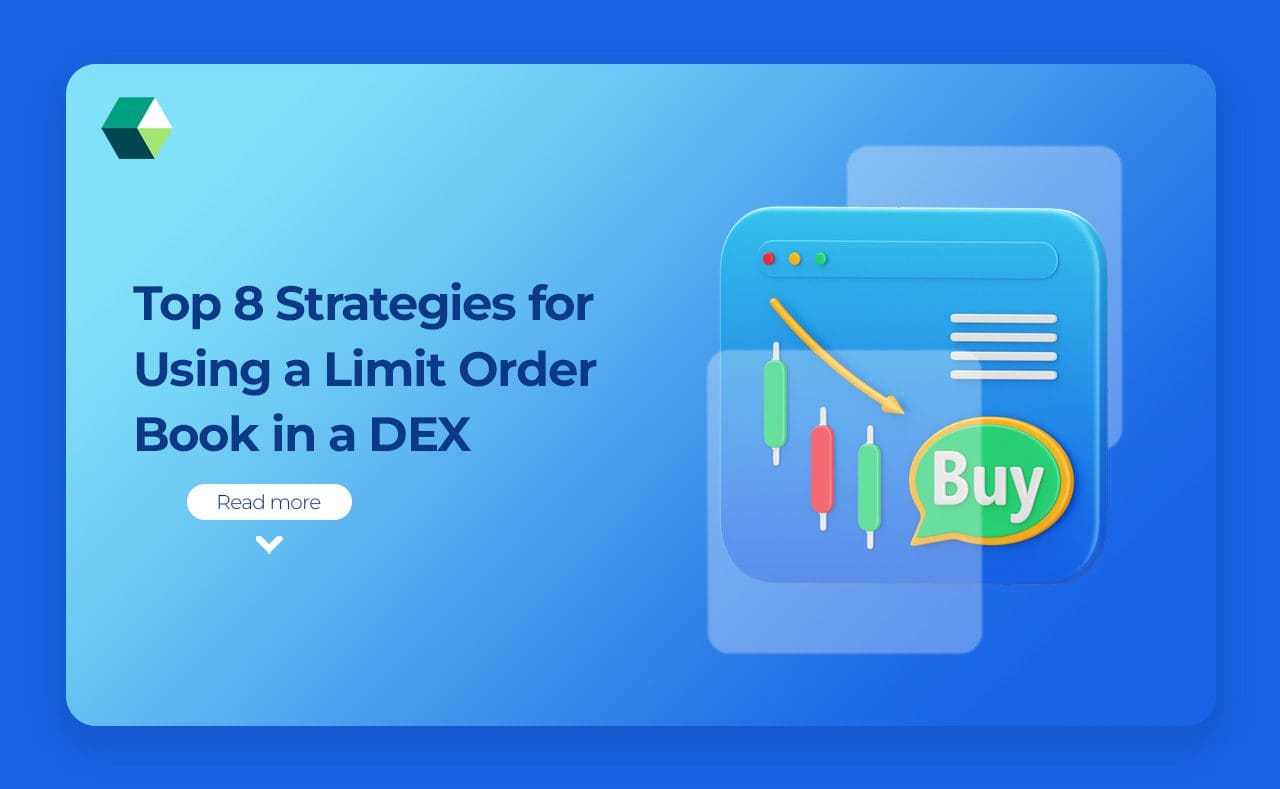
The limit order book (LOB) is a crucial feature of decentralized exchanges (DEXs) that helps traders execute orders efficiently. Unlike traditional exchanges, DEXs operate on decentralized networks and often employ complex mechanisms to match orders. Understanding and effectively using the LOB can greatly enhance your trading strategies. Here’s an in-depth look at the top strategy for utilizing a LOB in a DEX.
What is a Limit Order Book?
A LOB is a system used in trading to display all current buy and sell orders for a specific asset, such as cryptocurrency, on an exchange. It organizes these orders by price and time, providing a real-time view of market activity. Each order in the book represents a limit order, which is an instruction to buy or sell an asset at a specific price. The book shows the highest prices that buyers are willing to pay and the lowest prices that sellers are willing to accept, creating a clear snapshot of supply and demand. This helps traders make informed decisions by understanding the market depth and the current state of buy and sell orders.
How Does a DEX Limit Order Book Work?
In a decentralized exchange (DEX), it works by organizing and managing buy and sell orders without needing a central authority. Traders place orders indicating the price and amount of an asset they want to buy or sell. These orders are listed in the trade ledger on the blockchain. When a buy order matches a sell order at the same price, the trade happens automatically using smart contracts, which handle the transfer of assets.
Building peer-to-peer trading platforms involves creating and setting up the entire system. Developers design the infrastructure to ensure smooth and secure operations. They use smart contracts to execute trades accurately while maintaining transparency and reliability. Leveraging blockchain technology, this development approach ensures a trustworthy and efficient trading environment without relying on a central authority.
Examples of Order Book in DEX
-
dYdX
dYdX is a DEX that combines advanced trading features with a traditional trading interface. It supports limit orders, stop orders, and margin trading, offering a more sophisticated trading experience. Users can place limit orders and see real-time market depth and activity.
-
1broker
1broker uses a trading ledger for a variety of assets, including cryptocurrencies and traditional financial instruments. The platform provides a transparent view of market depth, allowing users to place and manage limit orders directly.
-
SushiSwap
While SushiSwap is primarily known for its Automated Market Maker model, it also incorporates aspects of traditional trading through its SushiSwap Perpetuals platform. This feature allows users to trade with limit orders and view real-time trading activity for perpetual contracts.
-
Loopring
Loopring is a decentralized exchange protocol that utilizes a trading ledger to facilitate transactions. It combines ledger-based trading with zkRollups (zero-knowledge rollups) to offer a high-throughput, low-cost trading experience while maintaining transparency.
-
Balancer
Balancer primarily operates with AMM, but its Balancer V2 model includes features that mimic traditional trading functionality. Users can set limit orders, and the platform provides insights into market depth and liquidity.
-
Kyber Network
Kyber Network aggregates liquidity from various sources and allows users to place limit orders through its protocol. Although it is mainly known for liquidity aggregation, it offers ledger-like features for certain trading pairs.
Limitations of Decentralized Limit Orders
Decentralized limit orders have some limitations. One major issue is that they often have less liquidity than centralized exchanges. This means there might be fewer buyers and sellers, which can lead to wider price gaps and higher slippage—where the price you get differs from what you expected. Another challenge is that using decentralized limit orders can be more complicated, especially for new users who might find it harder to place and manage trades compared to the more user-friendly centralized platforms.
Additionally, because DEXs are decentralized, they might match and execute orders more slowly. There’s also the risk of front-running, where others might take advantage of your order to make a profit before your trade goes through. Cross-chain swap functionality is helping to address some of these concerns. Developers are working on improving these issues by making DEXs more efficient through increased liquidity, faster order matching, and overall system enhancements.
8 Key Strategies for Using a Limit Order Book in a DEX
-
Set Realistic Prices
Place limit orders at prices that reflect current market conditions. Avoid setting prices that are too high or too low compared to the market, as this can lead to your orders remaining unfulfilled for a long time.
-
Monitor Market Depth
Regularly monitor the market to understand its depth, which shows the number of buy and sell orders at various price levels. This helps you gauge supply and demand and make more informed trading decisions.
-
Use Stop-Loss Orders
Implement stop-loss orders to automatically sell an asset if its price drops below a certain level. This helps protect your investments by limiting potential losses.
-
Take Advantage of Limit Orders
Use limit orders to buy assets at lower prices and sell them at higher prices. Placing buy orders below the current market price and sell orders above it allows you to capitalize on price fluctuations.
-
Analyze Order Flow
Pay attention to changes in trading activity and the flow of orders. Significant increases or decreases in order volume can indicate upcoming price movements, helping you anticipate market trends.
-
Avoid Front-Running
Be aware of the risk of front-running, where others might act on your limited orders to benefit from price changes before your order is executed. Use strategies to minimize this risk, such as placing smaller, staggered orders.
-
Diversify Orders
Instead of placing a single large order, spread out your orders into smaller ones. This can help avoid impacting the market price and increase the likelihood of your orders being fulfilled.
-
Leverage Trading Bots
Consider using trading bots to automate your limit orders based on predefined strategies. Bots can execute trades more efficiently and consistently, freeing you from having to monitor the market constantly.
Why Trust Nadcab Labs for Limit Order Book?
Trusting Nadcab Labs for trading system solutions comes with several advantages. Nadcab Labs specializes in creating and optimizing decentralized exchange platforms, ensuring smooth and efficient operation with accurate, real-time updates. They focus on integrating advanced technologies to enhance liquidity management, minimize slippage, and speed up order execution.
With a commitment to transparency and security, Nadcab Labs employs best practices in blockchain development to build reliable and user-friendly platforms. Their tailored solutions are designed to meet your specific needs, ensuring that your trading experience is both seamless and effective. By choosing Nadcab Labs, you benefit from their extensive experience and innovative approach, making them a trusted partner in developing and managing your trading systems.






